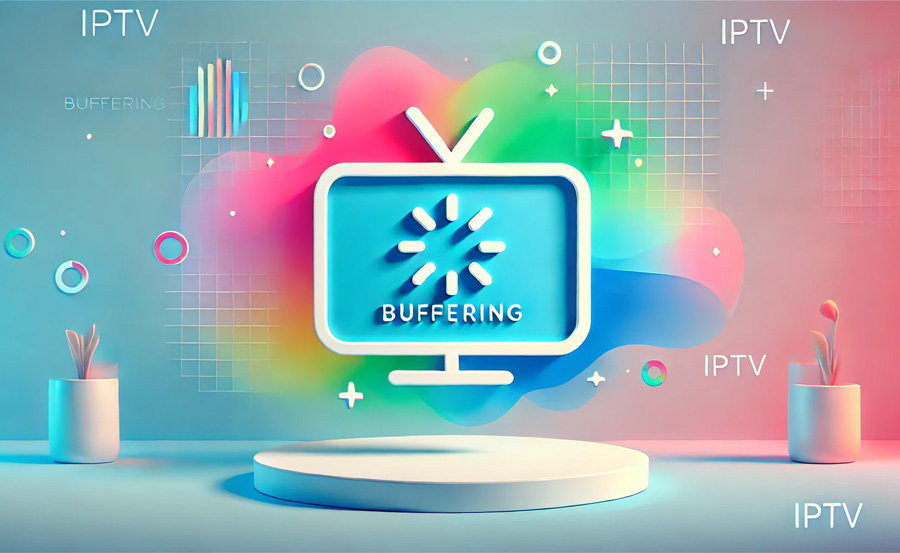Buffering issues can be one of the most frustrating problems for IPTV users. You’re in the middle of watching your favorite show, and suddenly the stream stops, stutters, or even disconnects. While IPTV delivers exceptional flexibility and variety in streaming content, buffering can sometimes disrupt the experience. Thankfully, there are practical solutions to fix these issues. This step-by-step guide will help you troubleshoot and resolve IPTV buffering problems effectively.
Step 1: Check Your Internet Connection
The most common cause of buffering is a slow or unstable internet connection. IPTV streaming, particularly HD or 4K content, requires a strong and stable connection. The general recommendation for smooth streaming is at least 10 Mbps for HD and 25 Mbps for 4K content.
- Solution: Use an internet speed testing website to check your current connection speed. If it’s lower than expected, try rebooting your router or contact your internet service provider to discuss upgrading your plan if necessary.
Step 2: Reduce Network Congestion
If multiple devices are connected to your home network and using significant bandwidth, it can result in buffering on your IPTV stream. Devices downloading large files or streaming other media can consume bandwidth that your IPTV stream needs.
- Solution: Disconnect any unnecessary devices from your network. You can also use Quality of Service (QoS) settings on your router to prioritize IPTV traffic, ensuring a smoother streaming experience.
Step 3: Change Streaming Servers
Sometimes the problem isn’t your internet connection but rather the server that is delivering the IPTV stream. Overloaded or inefficient servers can lead to buffering issues, even with a high-speed internet connection.
- Solution: If your IPTV provider offers multiple servers, try switching between them. Many providers give users access to different server locations, so switching to a less crowded server may resolve the buffering issues.
Step 4: Increase Buffer Size in Your IPTV App
Most IPTV apps allow you to adjust the buffer size for streaming content. Increasing the buffer size can help stabilize the stream and reduce buffering, especially if you have a slightly unstable connection.
- Solution: Go into your IPTV app settings and locate the buffer size option. Increase the buffer value to give your stream more room to load ahead of time. Keep in mind that setting the buffer too high could introduce a slight delay when switching between channels.How to Use Plex for IPTV Streaming: A Complete Beginner’s Guide
Step 5: Update Your IPTV App or Player
Outdated apps or media players can sometimes struggle to handle newer IPTV streams or video codecs, leading to performance issues such as buffering.
- Solution: Make sure you are using the latest version of your IPTV app or media player. Check for any updates in the app store or from the developer’s website. These updates often come with bug fixes and optimizations that improve streaming performance.
Step 6: Use a Wired Connection (Ethernet)
Although Wi-Fi is convenient, it’s not always the most stable connection for IPTV streaming. Wireless interference, distance from the router, and the number of devices on the Wi-Fi network can all impact the quality of your connection.
- Solution: If possible, connect your IPTV device directly to the router using an Ethernet cable. A wired connection is generally more stable and provides a more reliable internet speed, which can significantly reduce buffering.
Step 7: Test a VPN Connection
In some cases, internet service providers (ISPs) may throttle your connection when they detect IPTV streaming. Using a VPN (Virtual Private Network) can bypass this throttling and provide a smoother streaming experience.
- Solution: Set up a VPN on your IPTV device or router. Make sure to choose a VPN with fast, reliable servers, as slow VPNs can worsen buffering problems. Once connected, test your IPTV stream to see if the buffering issues are resolved.
Step 8: Restart or Reset Your Router and IPTV Device
If none of the above steps work, it may be time to restart your router or IPTV device. Over time, routers can accumulate errors or cache data that may interfere with streaming.
- Solution: Turn off your IPTV device and unplug your router. Wait for about 30 seconds, then plug the router back in and allow it to reboot. Afterward, turn on your IPTV device and try streaming again. This simple step often resolves temporary glitches and connection issues.Comparing IPTV Players: Which Interface Works Best for You?
Step 9: Contact Your IPTV Provider
If you’ve followed all the above steps and are still experiencing buffering issues, the problem may be with your IPTV service provider. They could be experiencing server overloads or technical difficulties.
- Solution: Contact your IPTV provider’s support team. Explain the issue, and they may be able to suggest further troubleshooting steps or verify if there is a problem on their end.
By following these steps, you should be able to reduce or eliminate buffering issues while watching IPTV. With a stable internet connection, updated apps, and appropriate adjustments, your IPTV experience will be smooth and enjoyable. Whether it’s live TV, video-on-demand, or sports channels, resolving buffering will ensure you never miss a moment of your favorite content.

